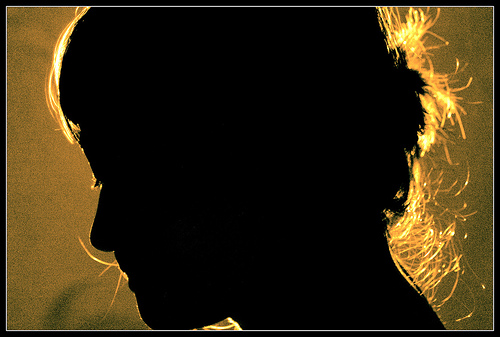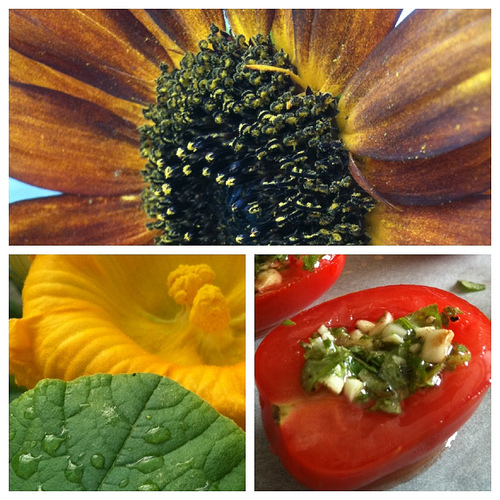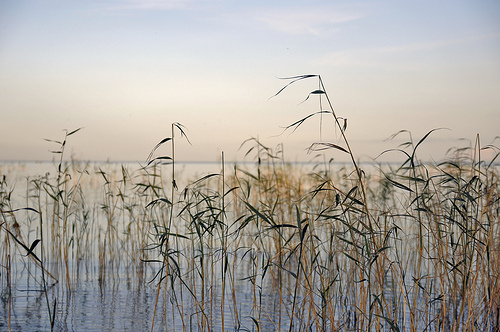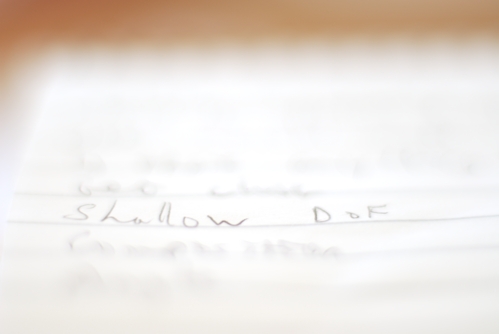5 Photography New Year Resolutions
At the start of a new year many of us often make New Year's Resolutions to improve our lives. Here are a suggestion of 5 resolutions you may want to make to improve your photography:
1. Get out of full automatic mode
Although it can be the easiest way to get a reasonably well exposed and in focus shot, using a fully automatic mode may be stifling your photography. Your camera can't know how you want a photo to look, instead it tries to make the photo conform to some averages pre-programmed into it.
Quite often these averages are what we want, but not always. To get a photo how you envisioned it before pressing the shutter, you have to take control of the camera. Did you want a photo of a silhouette against a twilight sky? Or did you want your subject properly exposed with the sky very bright? If you let your camera decide, you'll probably end up with something between the two, rather than what you wanted.

golden by Francesco Rachello on flickr (licensed CC-BY-SA)
Using one of the semi-automatic modes, i.e. shutter priority or aperture priority, and then using exposure compensation to directly control the exposure can also help with your photography. However, this doesn't give you quite as much control as full manual mode since you are still relying on the camera's meter for the base exposure setting. So get out of automatic mode, and get some experience with manual mode.
2. Take less pictures
Doing less of something to become better at it sounds counter-intuitive, but hear me out. With digital photography many of us are quite sloppy with our photos and just take quick snapshots of any old thing. After all, it doesn't cost anything. However, this can be detrimental to our photography.
Instead try and be more selective with your shots, only taking a shot when you think you have a really strong photo lined up in the viewfinder / on the LCD. This helps to reinforce what does make a strong photo to us, as well as reducing the amount of photos from a session you have to sort through to find the few good ones.
3. Set yourself a project
Setting yourself one (or more) projects can be a great way to get yourself out of a photographic rut and thinking more creatively. It can be something as simple as taking a photo every day, or taking a set of photos along a theme such as self portraits, buildings with red doors, etc.

Garden Triptych by dnfisher on flickr (licensed CC-BY)
By doing this you are more likely to think about your subject, and the different ways it can be photographed and represented. You may well come up with an idea for a great photo that you wouldn't have of thought of otherwise. For more ideas and info see Shoot to a theme to improve your photography and 5 Photo Projects To Improve Your Photo Skills.
4. Make more use of shallow DoF
If you only have a compact camera, this one might be a bit more difficult (though not impossible*), but for DSLR and MILC users, utilizing the shallow depth of field the larger image sensor can provide is something we often overlook.
"f/8 and be there" is a popular phrase, meaning that an aperture of f/8 gives a good balance between depth of field and shutter speed for most situations. However, sometimes using a shallow depth of field, such as f/2.8 can make for a better photo.

Ladoga #3 by dr_tr on flickr (licensed CC-BY)
Portrait photography is an obvious example where shallow depth of field is often preferred, but how about applying it to other forms of photography, such as landscape photography?
*Compact digital cameras typically have small sensors that make it difficult to get a shallow depth of field. However, if your subject is very close to the camera, while the background is much farther away, a shallow depth of field effect can still be achieved. Since your subject needs to be very close to the camera, this only really works for small objects and close-ups though.
5. Remembering and putting tips into practice
Knowing the basics of composition and how to set your camera for a certain type of shot is one thing, putting it into practice when you're out 'in the field' is another. When we see a nice scene it's too easy to just take a quick snapshot and move on, not thinking too much about the photo as we take it.
Instead we need to slow down, take our time and put into practice the things we've learned about taking great photos. For myself, I have written a checklist of things I should check before I take a shot, and will be taking it with me next time I go out with the camera.

I will go through the list as I take each shot (maybe not for quick shots such as skittish wildlife though). Eventually the 'rules' / things to check will become ingrained, and I will do them instinctively.
Do you have any New Year's Resolutions in regards to photography? Perhaps you have a resolution in regards to a specific type of photography, e.g. I plan to try and avoid black backgrounds in my macro photography. You can share your ideas for resolutions in the comments below.




